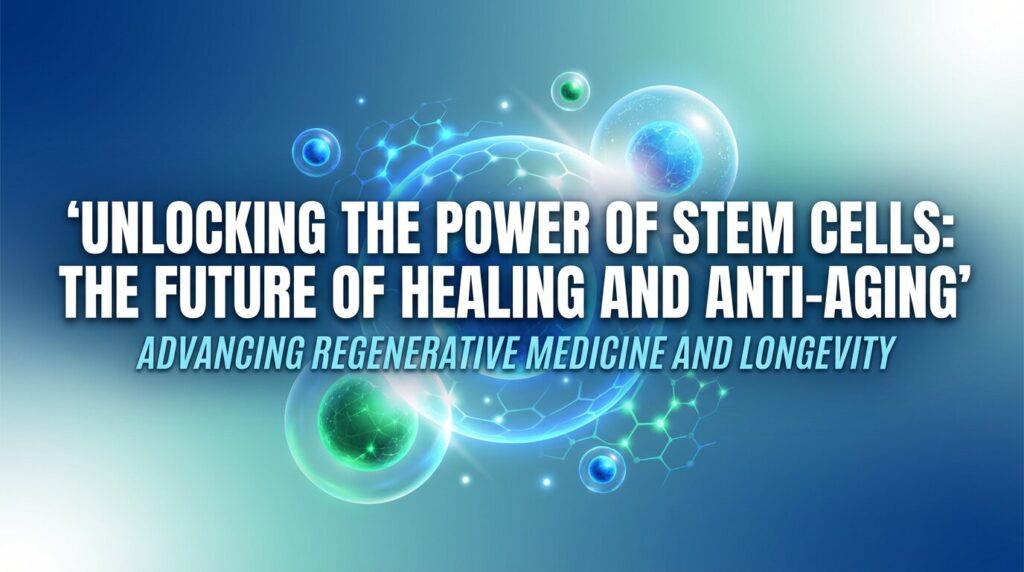For decades, stem cell therapy has been a topic of great intrigue and debate in the medical field. With its potential to transform the way we treat various diseases and conditions, stem cell therapy has been making waves in the scientific community.
In this article, we delve deep into the world of stem cell therapy and explore how this revolutionary treatment can significantly improve your health and overall well-being.
Understanding Stem Cells and Their Potential
Stem cells are unique cells with the remarkable ability to develop into many different cell types in the body.
They serve as a repair system, dividing and replenishing other cells as long as the person or animal is alive. This characteristic makes them an ideal candidate for treating various diseases and conditions, including Parkinson’s disease, spinal cord injuries, and diabetes.
How Does Stem Cell Therapy Work?
The therapy involves several steps, from harvesting stem cells to their subsequent administration.
Harvesting stem cells:
The first step in stem cell therapy involves obtaining the stem cells from a suitable source.
Depending on the specific treatment, stem cells can be harvested from the patient (autologous) or a donor (allogeneic).
Adult stem cells can be collected from bone marrow, adipose tissue (fat), or peripheral blood, while embryonic stem cells are typically derived from donated embryos.
The harvesting procedure varies based on the source of the stem cells. For instance, bone marrow extraction may require a needle to be inserted into the patient’s hip bone, while adipose-derived stem cells can be obtained through a minimally invasive liposuction procedure.
Processing and isolation:
After harvesting, the stem cells are processed and isolated to ensure a concentrated and purified population of cells.
This step is crucial to maximize the therapeutic potential of the stem cells and minimize the risk of contamination.
Various methods, such as centrifugation or the use of specialized cell isolation devices, can be employed to separate the stem cells from other cell types and debris.
Expansion and differentiation:
In some cases, the stem cells may need to be expanded in a laboratory setting to obtain an adequate number of cells for treatment.
This process involves culturing the stem cells under controlled conditions to promote their self-renewal and proliferation.
Additionally, specific growth factors or other signaling molecules may be introduced to guide the stem cells to differentiate into the desired cell type, depending on the target tissue or organ.
Administration of stem cells:
Once the stem cells are harvested, processed, and, if necessary, expanded or differentiated, they are ready for administration.
The method of delivery depends on the specific treatment and target tissue. Common administration routes include direct injection into the affected area, intravenous infusion, or implantation through a surgical procedure.
In some cases, the stem cells may be combined with scaffolds or other biomaterials to facilitate their integration and function within the target tissue.
Monitoring and follow-up:
After the stem cell therapy, patients are closely monitored to assess the treatment’s effectiveness and to identify any potential complications. This may involve regular check-ups, imaging studies, or other diagnostic tests.
Follow-up care is crucial to ensure the patient’s safety and to optimize the therapy’s outcome.
Types of Stem Cell Therapy
There are several types of stem cell therapy, each with its unique benefits and applications. The most common types include:
Embryonic stem cell therapy:
These stem cells are derived from embryos and have the potential to develop into almost any cell type in the body. They are commonly used for treating genetic disorders and regenerative medicine. More info here.
Adult stem cell therapy:
Adult stem cells can be found in many tissues and organs in the body. They have a more limited ability to differentiate into different cell types but are still useful for treating various conditions, including heart diseases and certain types of cancer. More info here.
Induced pluripotent stem cell therapy:
This therapy involves reprogramming adult cells into a pluripotent state, which allows them to differentiate into various cell types. This technique has the potential to be used for personalized medicine and drug development. More info here.
The Benefits of Stem Cell Therapy
Stem cell therapy holds immense potential to revolutionize healthcare. Some of its benefits include:
Regenerative medicine:
Stem cell therapy can be used to replace or regenerate damaged tissues and organs, offering hope to those suffering from chronic diseases and injuries.
Reduced reliance on organ transplants:
With the advancement of stem cell therapy, the need for organ transplants could decrease, reducing waiting lists and improving patient outcomes.
Personalized medicine:
Stem cell therapy can be tailored to individual patients, increasing the effectiveness of treatment and reducing potential side effects.
Drug development:
Stem cell research can help in the development of new drugs and therapies, accelerating the process of bringing new treatments to patients.
FAQs
Q: Is stem cell therapy safe?
A: Stem cell therapy is generally considered safe when performed by qualified professionals. However, as with any medical treatment, there may be risks involved. It is essential to consult with a healthcare provider before undergoing any form of stem cell therapy.
Q: What conditions can stem cell therapy treat?
A: Stem cell therapy is being researched for treating various conditions, including arthritis, multiple sclerosis, Parkinson’s disease, spinal cord injuries, and heart disease.
Q: How much does stem cell therapy cost?
A: The cost of stem cell therapy can vary depending on the treatment type, location, and individual factors. It is essential to discuss costs with your healthcare provider before beginning treatment.
Q: Is stem cell therapy covered by insurance?
A: Coverage for stem cell therapy depends on the specific insurance plan and treatment type. Some plans may cover specific stem cell treatments, while others may not. It is crucial to consult with your insurance provider to determine coverage.
The Future of Stem Cell Therapy
As research continues to progress, stem cell therapy is expected to play a more prominent role in the medical field.
With advancements in technology and a better understanding of stem cell behavior, it’s likely that we’ll see an increase in the number of conditions and diseases that can be treated with stem cell therapy.
In conclusion, stem cell therapy is an exciting field of regenerative medicine that has the potential to transform healthcare.
By unlocking the secret of stem cells, we can harness their remarkable regenerative abilities to improve overall health and well-being.
As research continues to progress, the potential benefits of stem cell therapy are becoming increasingly clear.
Consult with your healthcare provider to determine if stem cell therapy is the right choice for you, and take the first step towards a healthier future.



